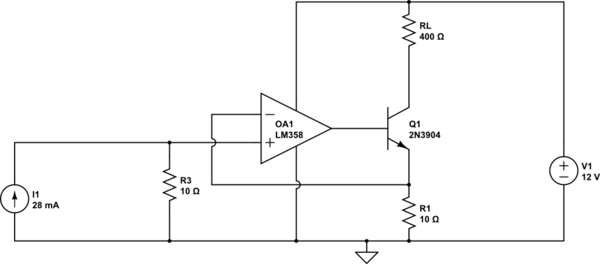I am trying to understand simple wilson current mirror circuit for regulating LED current based on external input.
Below is my challenge:
based on the value of the R1 resistor the current through the load R2 is to be changed. Current i am planning to pass through the load is about 20 mA to 50 mA.
Case1:: R1 ranges from 300 to 550. R2 set to 100 ohms. Below are the simulation results.
Case2: R1 range is same as above. R2 is set to 400 ohms. Below are the results.
My basic questions:
1. have i got the basic wilson circuit correct?
2. are the R1 and R2 values relative. For csae2 above, i see that, the current mirror is not successful. Is this because R2 is already bigger than R1?
3. Any guidance towards the relation between R1 and R2, and improvements if any are welcome.
Edit:
My goal: To control the flow of the current through R2 (between 20 to 50 mA). Finally, i will have a LED in place of R2 and a small protective resistor. i have to control the resistance R1, from which the LED current should get regulated. This exercise is to understand more about wilson current mirror too.
Edit2
Added LED TLCR51 info: http://www.farnell.com/datasheets/463614.pdf
Thanks in Advance.





